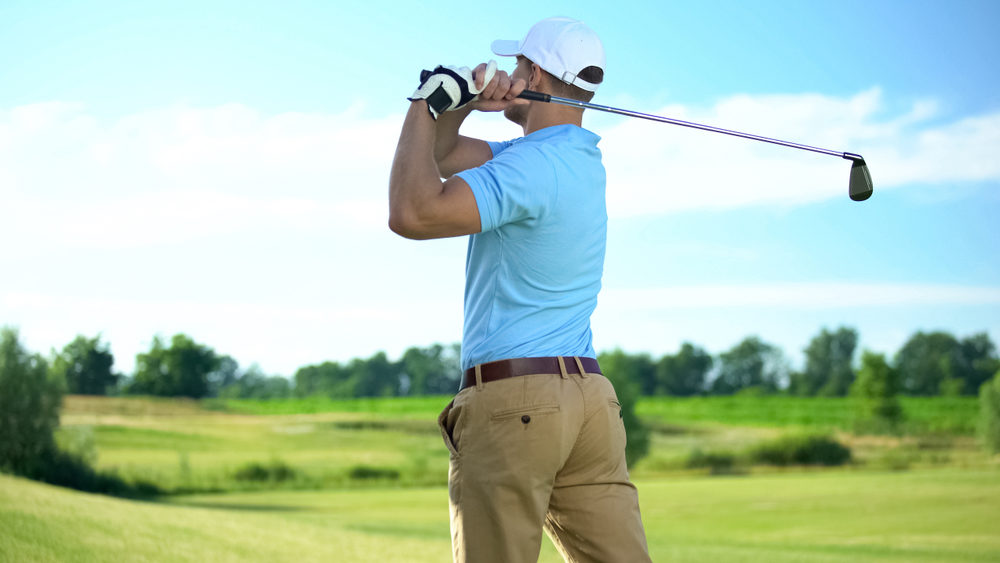Don’t let elbow pain keep you from enjoying a day at the golf course.
Avid golfers eagerly anticipate the start of spring so they can once again head to the golf course and enjoy an afternoon in the sun. Yet as you inspect your clubs to make sure they’re in top shape for the first swings of the season, you should also pay attention to any aches and pains in your body.
If you’ve played golf for many years, you’ve probably heard the term golfers’s elbow — or even may have suffered from the condition. Golfer’s elbow, known medically as medial epicondylitis, stems from repeated movements that inflame the tendons in the inner elbow. A burning pain centered on the inside of the elbow is the most prominent symptom, but you may also experience stiffness in the joint, weakness in the wrist and hand, as well as numbness in the fingers.
Fortunately, golfer’s elbow can be prevented with a few simple measures. And even if you do experience pain in the inner elbow, it shouldn’t keep you off the links for long, as the condition generally responds well to conservative treatment methods.

Preventing Golfer’s Elbow
As with any sport or physical activity, proper warm-up is key to avoiding injury. For golfers in particular, that means strengthening your forearm muscles by lifting light weights or squeezing a tennis ball. You can also ask a golf instructor for tips on how to improve your form. If you lock your lead arm when you swing, for instance, you’ll put too much torque on your elbow and strain the tendons. Lastly, you might want to consider switching from older golfing irons to graphite clubs.
Treating Golfer’s Elbow
If you believe you may have golfer’s elbow, your doctor will perform a physical examination to assess your level of pain and stiffness by applying pressure to the joint and having you move your elbow, wrist, and fingers. An X-ray can help determine if there is another cause of the pain, such as arthritis or a fracture.
The first step in addressing golfer’s elbow is to stop playing golf or any activity that causes discomfort until the pain subsides. During this time, you can try some at-home treatments, such as covering the elbow with an ice pack three or four times a day for 15 minutes. Your doctor may also outfit you with a customized brace to provide extra support to the elbow tendons. Over-the-counter pain medication helps reduce discomfort, and in some cases, your doctor may recommend a steroid injection.
After a rest period of three to six weeks, you’ll begin physical therapy to stretch and strengthen the muscles and tendons and improve your range of motion. You can expect a complete recovery with conservative treatment in four to six months.
Surgery is only advised if conservative treatments have not been able to eliminate pain. In this minimally invasive operation, a surgeon cuts two small incisions into the elbow and views the joint through a telescope. Any damaged tendon tissue is then removed. Physical therapy follows about two months after the surgery, and full recovery takes between four to six months.
Get Back Into the Swing of Things
Spring is on it’s way, and if you’re a golfer, you’ll want to enjoy your favorite sport without any pain. At New York Bone & Joint Specialists, our staff of doctors and physical therapists will help you overcome any discomfort and show you ways to keep your arms healthy for the swings you’ll take this season. Contact us today to set up an appointment.




